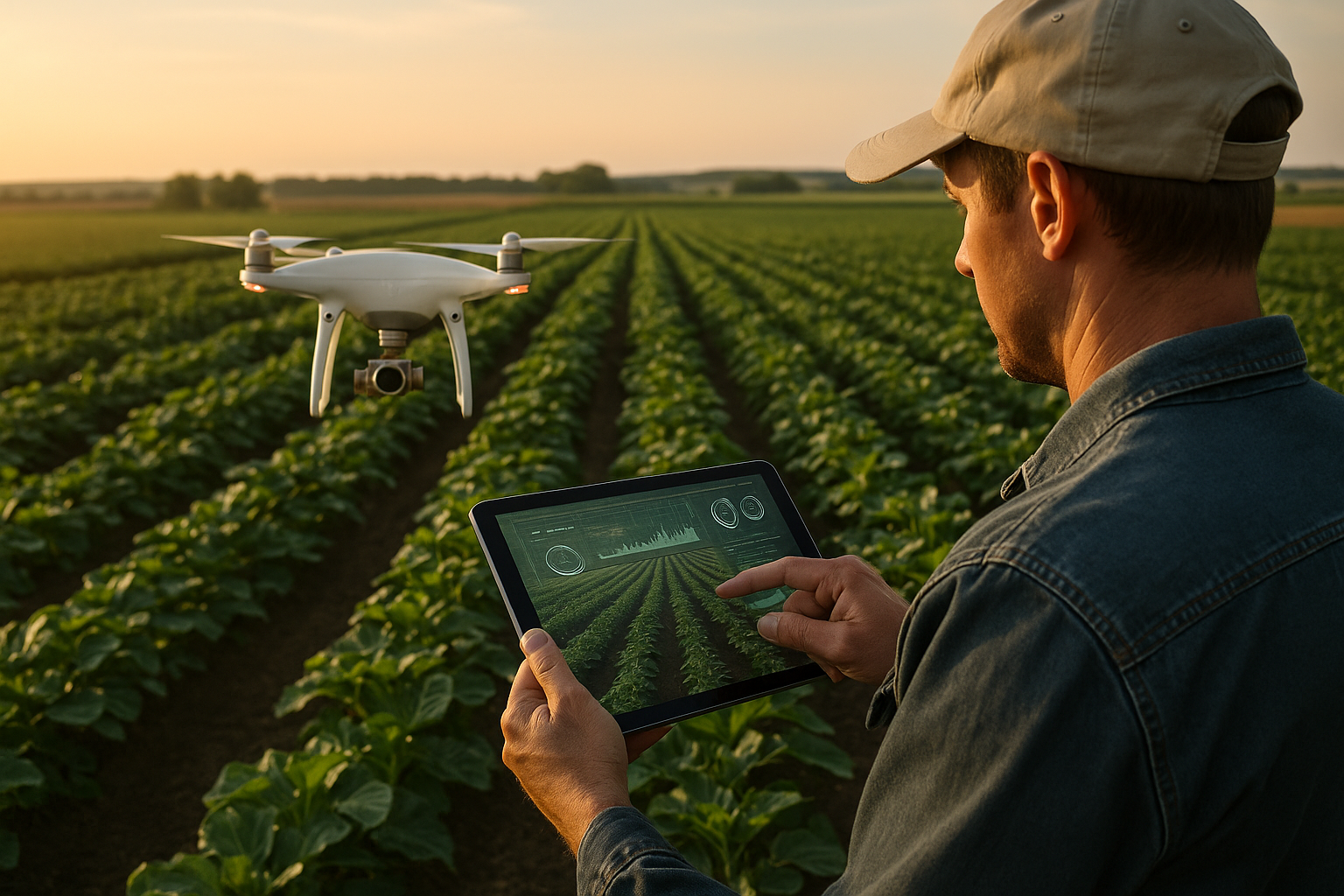Can AI diffusion models solve farming’s biggest challenges?
Diffusion models are emerging as a game-changer in smart and precision agriculture. Unlike earlier AI methods such as generative adversarial networks (GANs), these models generate high-quality images with superior stability, making them particularly effective in agricultural contexts where data is scarce or unbalanced. Their capacity to create detailed and realistic imagery has positioned them at the forefront of innovations for crop monitoring, pest and disease detection, and resource management.

Artificial intelligence (AI) is reshaping the future of agriculture, and one particular technology is standing out. Diffusion models, a class of generative AI, are proving to be a powerful tool in transforming farming practices worldwide. A new comprehensive review submitted on arXiv highlights how this technology is addressing critical agricultural challenges.
The paper, “A Comprehensive Review of Diffusion Models in Smart Agriculture: Progress, Applications, and Challenges”, systematically explores how these models can drive efficiency, precision, and sustainability in agriculture.
The review compiles extensive research on diffusion models, showcasing how they outperform traditional generative methods and offer solutions to persistent problems such as limited data, imbalanced samples, and the complexity of agricultural environments. The authors argue that this breakthrough technology could significantly accelerate the modernization of agriculture and enhance food security in an era of growing population and shrinking arable land.
How are diffusion models transforming agricultural practices?
Diffusion models are emerging as a game-changer in smart and precision agriculture. Unlike earlier AI methods such as generative adversarial networks (GANs), these models generate high-quality images with superior stability, making them particularly effective in agricultural contexts where data is scarce or unbalanced. Their capacity to create detailed and realistic imagery has positioned them at the forefront of innovations for crop monitoring, pest and disease detection, and resource management.
The review details how diffusion models enhance the accuracy of agricultural tasks by producing synthetic data that improves machine learning performance. For example, they can generate high-quality images of crops under different conditions, enabling better identification of pests or diseases even during early, hard-to-detect stages. This capability minimizes reliance on manual inspections, which are time-consuming and prone to errors.
Additionally, diffusion models are being applied to remote sensing image processing, significantly improving the clarity and resolution of satellite and drone images. These enhanced images allow for more precise monitoring of farmland, assessment of crop health, and evaluation of environmental changes, ultimately leading to better decision-making in agricultural operations.
What are the benefits and limitations of this technology?
The ability of diffusion models to generate high-quality, diverse images helps overcome data scarcity, a common issue in agricultural AI training. This not only improves the accuracy of existing models but also boosts their adaptability across varied farming conditions.
Moreover, diffusion models are remarkably stable during training, avoiding the pitfalls of GANs such as mode collapse. Their flexibility in conditional generation allows them to produce customized outputs based on specific crop types, environmental conditions, or pest categories. This tailored approach supports precision agriculture, enabling farmers to apply targeted interventions and optimize resource use.
However, the review also notes that this technology is not without its limitations. High computational requirements and the need for robust datasets pose significant challenges. The models demand substantial processing power, which may limit their adoption in resource-constrained settings. Additionally, ensuring data quality remains critical to achieving accurate outputs. The authors call for further research into improving computational efficiency, developing multimodal data fusion techniques, and refining the models to work effectively in low-resource environments.
How can diffusion models drive sustainable agriculture?
Diffusion models’ ability to enhance pest and disease detection supports the early intervention necessary to reduce pesticide use, lowering environmental impact. By improving crop growth prediction, they also enable more precise irrigation and fertilization, contributing to better resource management and reduced waste.
These technologies align closely with global efforts to make agriculture more sustainable. By integrating diffusion models into agricultural monitoring systems, farmers can achieve higher yields while minimizing environmental harm. The models also have the potential to advance the development of Water Resource Recovery Facilities and other sustainable farming infrastructures by providing more accurate data and predictive insights.
Furthermore, the review highlights the role of diffusion models in addressing climate change challenges. Improved remote sensing and environmental monitoring capabilities allow for better adaptation strategies, ensuring that farming practices remain resilient in the face of shifting climate conditions.
For policymakers, researchers, and agricultural stakeholders, the findings point to an urgent need to invest in this promising technology. The path forward involves not only harnessing the power of diffusion models but also ensuring that their benefits are accessible to farming communities worldwide. In doing so, agriculture can transition toward a smarter and more sustainable future, with AI diffusion models at the heart of this transformation.
- READ MORE ON:
- AI diffusion models in agriculture
- smart farming AI technology
- AI in precision agriculture
- sustainable agriculture with AI
- agricultural AI innovations
- how diffusion models are transforming smart agriculture
- future of farming with generative AI technologies
- AI-based agricultural innovations for sustainable food production
- FIRST PUBLISHED IN:
- Devdiscourse










